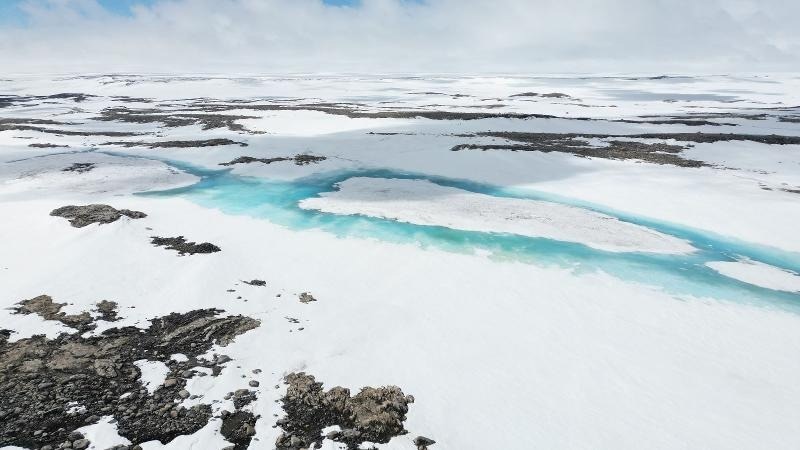
Image Credit: Queensland University of Technology.
For nearly two months, the field team group was based in Antarctica, with indications the drones they piloted helped captured unparalleled high-resolution imagery of biodiversity and vegetation in the safeguarded areas.
The sight was taken from Antarctic Specially Protected Areas (ASPAs 135 and 136), not far from the scientists’ base settlement of Casey Station, determined regions with moss and lichen, which were not earlier picked up by satellite.
QUT Centre for Robotics researcher Dr. Juan Sandino, who specializes in automated remote sensing systems and mechatronics, helped evolve and deploy the drones, thereby categorizing Antarctic vegetation at low altitudes.
Piloting these flights was at times challenging; however all the systems performed well under extreme cold conditions.
Dr Juan Sandino, Researcher, Centre for Robotics, Queensland University of Technology
Sandino stated that working in Antarctica needed arduous physical preparation and had extra logistical pressure of guaranteeing the heavy equipment was operational.
The seven-year $3.57 million project has been co-headed by QUT Professor Felipe Gonzalez and Auckland University of Technology Professor Barbara Bollard.
The project’s key target included tracking the vegetation via artificial intelligence and smart sensors, modeling microclimates, and generating precise maps of safeguarded regions and other ice-free areas.
Few plants can survive in Antarctica and mosses are the largest and oldest plants to grow there with beds up to 50 meters wide and plants as old as 500 years. The moss is sensitive to variations of temperature and moisture in Antarctica and is an important indicator of climate change.
Barbara Bollard, Professor, Auckland University of Technology
Professor Gonzalez stated mapping and tracking the moss beds over time would help to comprehend the health of mosses and other vegetation.
The study has been performed as part of Securing Antarctica’s Environmental Future (SAEF), a $36 million research program financially supported by the Australian Research Council as a special research initiative.
Additional drone-derived imagery and AI for other Antarctic regions might be utilized to assess the effectiveness of area-based conservation interventions in many parts of the icy continent.
The research, recently reported in the journal Conservation Biology, submitted a case and a research agenda assessing the conservation effect of the protected areas of Antarctica.
Also, a Ph.D. researcher Joanna Burrows and supervisor Professor Kerrie Wilson (pictured above right), who are part of SAEF, helped in determining a gap in the research concerning the effectiveness of Antarctic Specially Protected Areas (ASPAs).
Ms. Burrows stated that drones could offer new and highly elaborate information to assess the performance of ASPAs.
Drones could increase the likelihood of successful data collection by allowing remote and fragile ecosystems to be surveyed with low impact and can mitigate some accessibility issues.
Joanna L. Burrows, Ph.D. Researcher, School of Biology and Environmental Science, Queensland University of Technology
Drones detect moss beds and changes to Antarctica climate
Video Credit: Queensland University of Technology.
Journal Reference:
Burrows, J. L., et al. (2023) Evaluating the conservation impact of Antarctica's protected areas. Conservation Biology. doi.org/10.1111/cobi.14059.